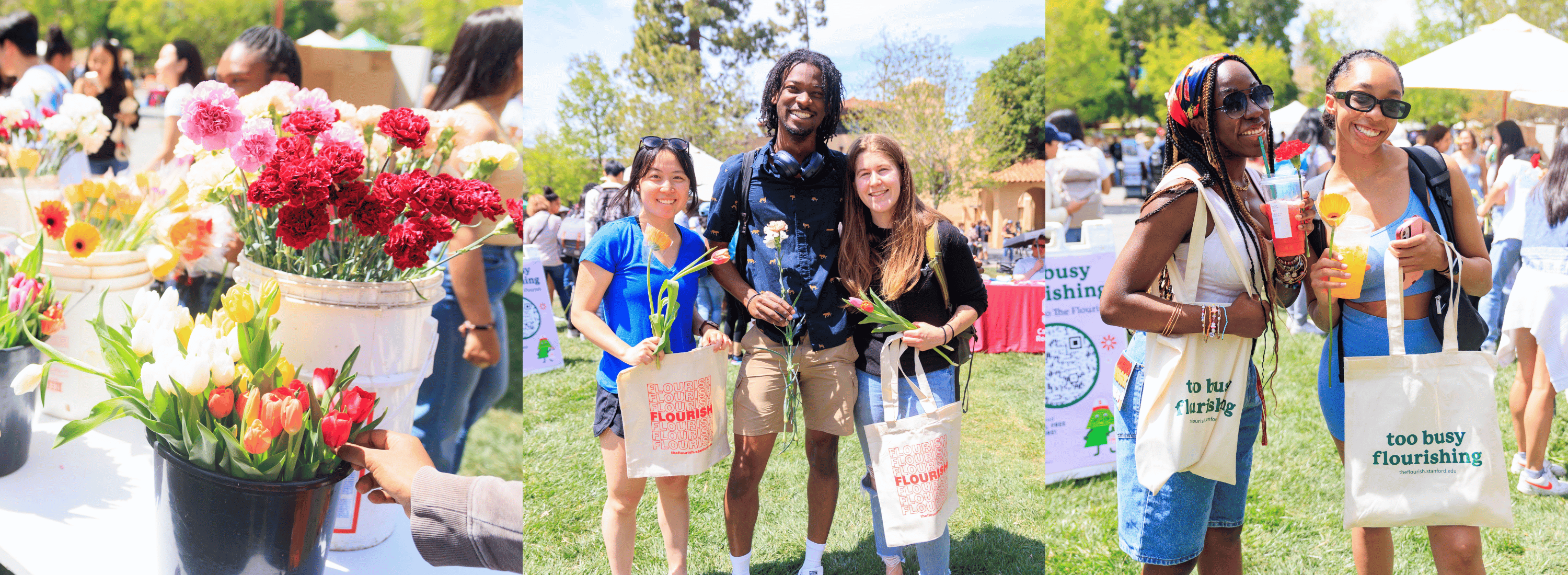The Flourish, Winter 2021
Supporting the well-being of all students at Stanford
We may be feeling extremely drained from a trying, and sometimes wonderful, transition back to campus, on top of the collective fatigue and trauma we still carry from the past two years. Add in the stress of the holidays and things can become much more challenging than we can handle alone. With this stress weighing down on us, it can be difficult to navigate these tough times.
For this month’s edition, we want to focus on tools we can use to find connections within ourselves, keeping us grounded during whatever comes our way this winter. Through gratitude, self-soothing activities, and self-compassion, we can discover ourselves and take care to mind our needs as they change over time. In doing so, we give ourselves permission to open up to connecting with others and foster healthy relationships so that we can flourish in a community of mutual support.
Let’s explore these areas together.

Recognizing the Good.
The bright green grass popping up through the swaths of brown foothills. It’s there if you look closely, emerging more vibrantly each day.
Noticing the steady greening of the Stanford foothills is my current daily moment of gratitude. The reassuring change of the seasons fills me with content. It doesn’t solve the existential threat of the climate crisis, but it does afford me a daily moment of pause to inhale deeply and enjoy something that feels right in the world. Taking this moment of gratitude for nature pulls me out of an anxious circle of thoughts and grounds me.
Jewish tradition calls this hakarat ha-tov, or “recognizing the good.” Some Jews mark these moments with a blessing as a way of lifting up the sacred in the mundane, the special in the ordinary, the gratitude in the taken for granted. What good will you recognize today?
Rabbi Laurie Hahn Tapper, Office for Religious & Spiritual Life
In the Spotlight
50% of Bridge Peer Counseling sessions focus on relationships
After more than a year in quarantine, seeking connection and maintaining good relationships feels more important than ever before. We need to establish caring relationships, be there for one another, and engage in meaningful conversations. The Bridge can help you connect to others and yourself when you are feeling adrift.
- For more information visit The Bridge Peer Counseling Center, or call 650.723.3392.
- Stanford Bridge Peer Counseling Post-Counsel Survey Fall 2021

Soothe...Recover...Mend...Build
We’re still adjusting. We’re burned out from the long, fatiguing slog of the past two years. Maybe the excitement and energy of returning to campus has worn off, and now we’re feeling deep-rooted tired.
Engage in some intentional self soothing. Find something easy to experience that brings you comfort, warmth and peace. Lean in to your being selves, relax the doing self, let yourself heal and your energy gradually return.
When some energy has returned, build yourself a Self-Care Menu so you have a personalized collection of activities, places, and people that help you recover and move toward your flourishing self.





